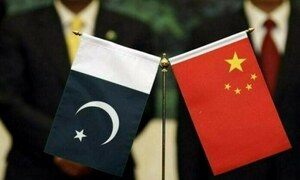Energy is the biggest economic mess this government has inherited and fixing it is imperative for economy to move on a sustainable path. There is a resolve by the incumbents to approach the multifaceted issue. First layer is to renegotiate lopsided contracts with the power producing companies operating in private, public and CPEC domain. The next layer should be to disintegrate the DISCOs, improve their management (through private participation in management or selling) and the last step is developing a vibrant energy market.
At this point the government is working on the first layer. But its handling is haphazard. Multiple committees or agendas are working with little coordination. It seems that prioritization is missing. One committee under Baber Yaqoob was formed to handle the issues of private sector IPPs under 1994 and 2002. With objectives to deal with excess profits (ROE), removing dollar indexation and moving from ‘take or pay’ to ‘take and pay’. There are political brownie points to gain; but impact on larger schemes of things will be little.

The bigger issue is of government owned power plants where the capacity payments is growing at alarming rates. But how can one handle these when government wants to privatize two RLNG plants. Government does not want to touch tariff structure for these plants, as by doing so the value of plants may fall (privatization proceeds may be diluted). But without doing so, issues of other IPPs/government owned plants issues will not be rectified. Then there are CPEC projects – which are to be dealt G to G. How can government sit on the negotiation table when its own projects are not to be touched? Moreover, the capacity of the government to negotiate with Chinese is well-known.
The best strategy is for government to start at home. The capacity of existing government plants is 18,925MW and another 3,400MW will commission in 12 months. Out of projected Rs1,045 billion capacity payment of total projects in 2021, Rs528 billion is of government own plants. The capacity payment of government projects will increase to Rs740 billion (overall Rs1,590bn) by 2023, and Rs860 billion (overall Rs1,781bn) by 2025. These numbers are estimated at last year PKR/USD average; thus, these shall increase further with currency depreciation as all payments are indexed to USD.

The core objective of the government should be to reduce the capacity payment to make grid-based energy affordable. The capacity payments are higher for recent and upcoming projects as debt repayments has a major part in it and that is higher for early years of a project. In case of all (barring one or two) of 1994 and 2002 IPPs, debt is being re-paid. The capacity issue is minimal – the payment is projected at Rs134 billion in 2021 and to reduce to Rs109 billion by 2025, as one of the projects (Kapco) is retiring soon.
The savings from 1994 and 2002 IPPs are low and overall impact on per unit tariff is negligible. However, on the government projects, the gains are huge. For example, the capacity payment of 2 new nuclear projects (2200MW) will be Rs194 billion in 2023 versus Rs109 billion for 6,587MW of 1994 and 2002 IPPs. Furthermore, it is easier to negotiate with bankers in case of government projects. In some cases, (such as RLNG plants in question for privatization) major lender are government banks (NBP and BOP).

But the government wants to privatize these RLNG plants. How can government get a good price when the return structure of all projects is under scrutiny? It seems that the focus is on headlines – from RLNG privatization and renegotiations with local seths of 1994/2002 policy. The juice, however, is in government own projects renegotiation – but it is not a catchy headline. The government seems to focus on ‘form’ over ‘substance’
Charity begins at home. RLNG plants are easier to deal – government owned and funded by local public banks. Government should renegotiate with 2 RLNGs plants debt repayment extension and equity dilution. Make a template of this – apply on the other government projects. Use this to negotiate with Chinese through highest level engagement. Thereafter, dealing with 1994 and 2002 IPPs would be a piece of cake.





















Comments
Comments are closed.